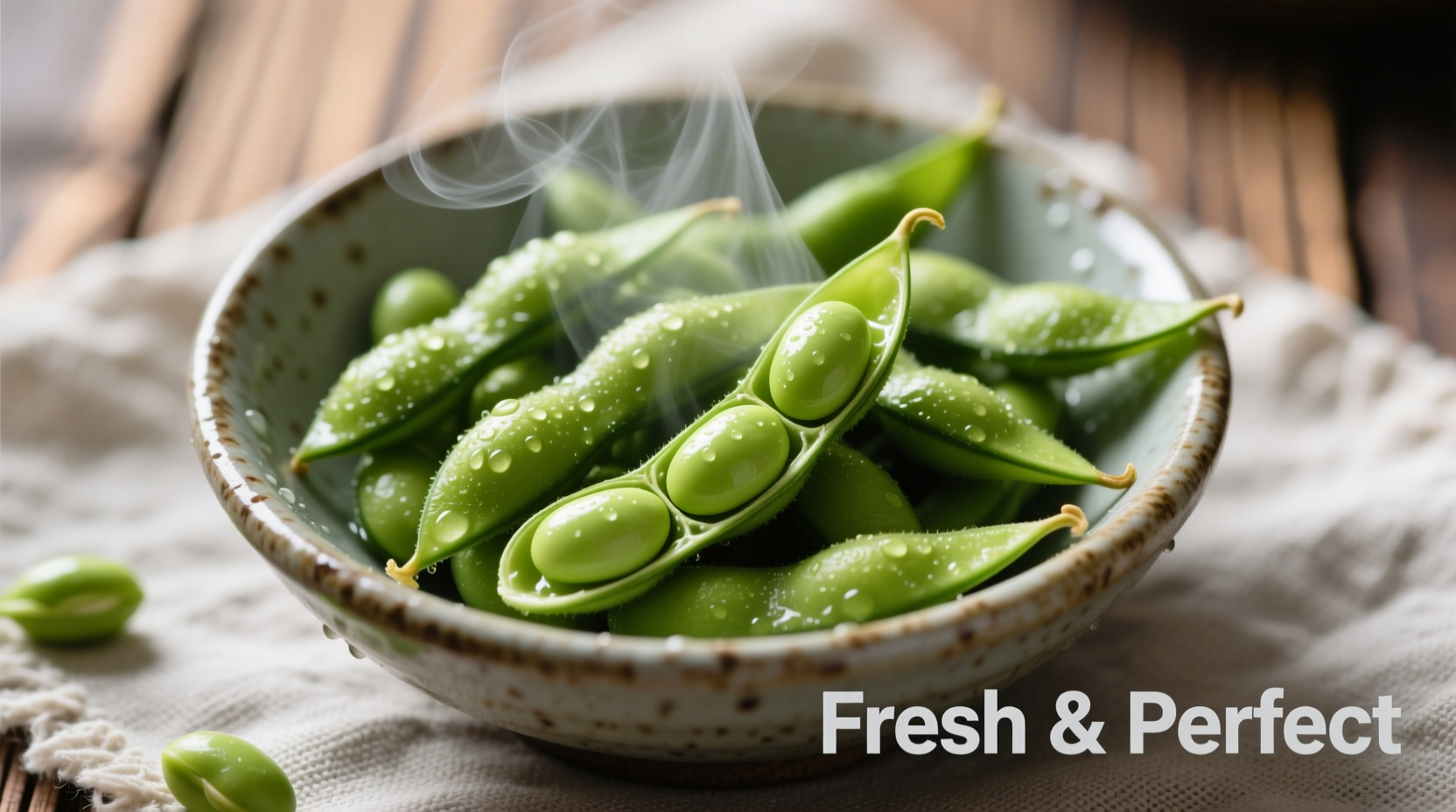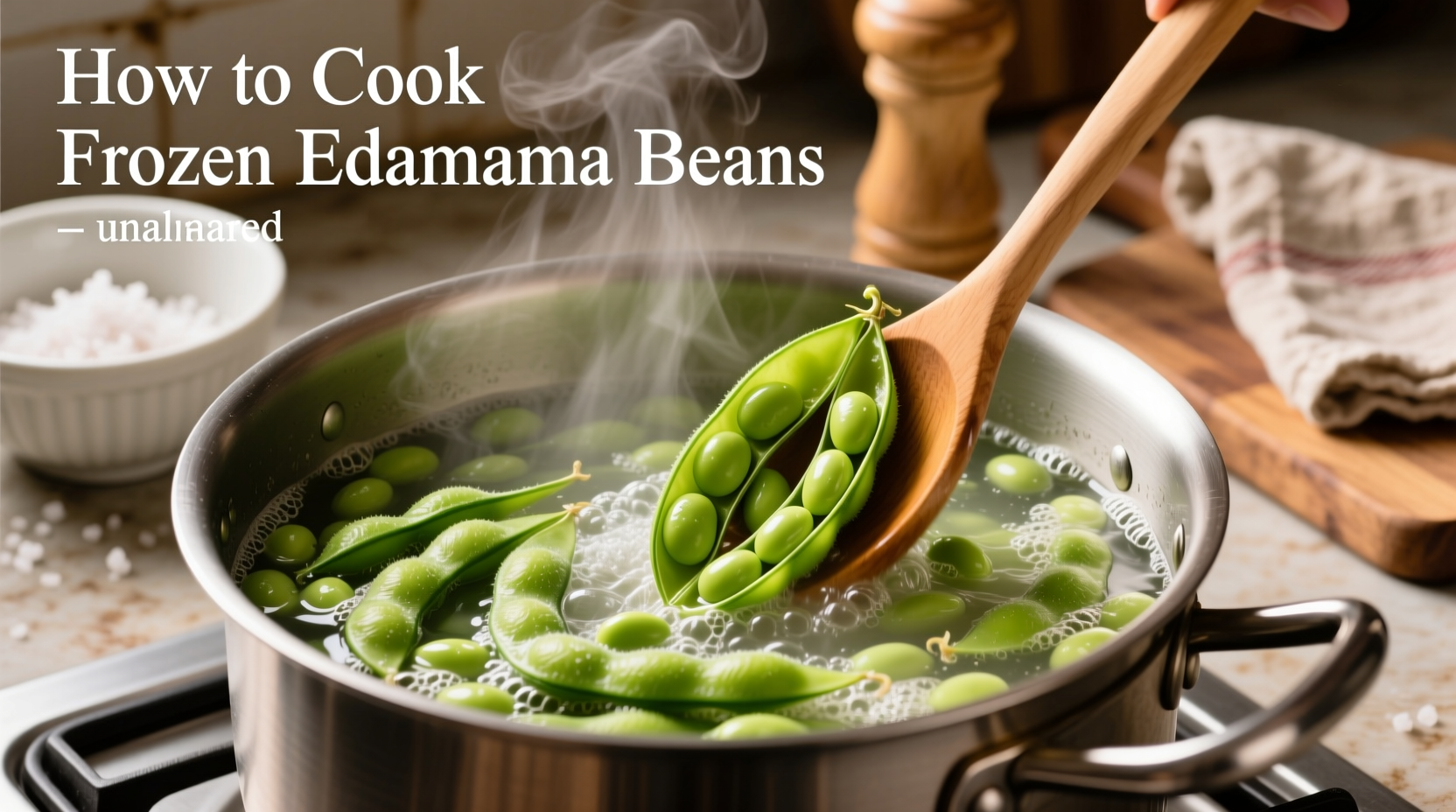Discover how to transform frozen edamame from freezer to table in under 10 minutes with professional techniques that guarantee perfect results every time. Whether you're preparing a quick snack, adding protein to your salad, or creating an authentic Japanese appetizer, these foolproof methods ensure your edamame maintains its nutritional integrity while delivering restaurant-quality flavor and texture.
Why Proper Frozen Edamame Preparation Matters
Edamame isn't just a simple snack—it's a nutritional powerhouse packed with complete protein, fiber, and essential vitamins. According to the USDA FoodData Central database, one cup of cooked edamame provides 17 grams of protein and 8 grams of fiber while containing only 189 calories. But improper cooking can destroy these benefits, leaving you with mushy, flavorless beans that lack their characteristic bright green color.
Unlike fresh edamame that requires shelling before cooking, frozen edamame comes pre-shelled and blanched, making it incredibly convenient. However, many home cooks make critical mistakes that compromise both texture and nutrition. The key is understanding that frozen edamame has already been partially cooked during processing, so your goal is gentle reheating rather than full cooking.
Essential Equipment Checklist
You don't need specialized kitchen tools to prepare perfect frozen edamame. Keep these basics on hand:
- Medium saucepan with lid (for boiling or steaming)
- Colander or strainer
- Timer (critical for perfect texture)
- Wooden spoon or tongs
- Small bowl for serving
Step-by-Step Cooking Methods Compared
Choose the method that best fits your kitchen setup and time constraints. Each technique produces excellent results when executed properly.
| Cooking Method | Time Required | Water Ratio | Texture Result | Best For |
|---|---|---|---|---|
| Boiling | 3-5 minutes | 4 cups water to 1 cup edamame | Tender-crisp | Traditional preparation, large batches |
| Steaming | 5-7 minutes | No water contact | Firmer texture | Nutrient preservation, delicate flavor |
| Microwave | 2-3 minutes | 2 tbsp water per cup | Slightly softer | Quick single servings, minimal cleanup |
| Air Frying | 8-10 minutes | None (dry method) | Crispy exterior | Snack-style preparation, restaurant texture |
Boiling Method: The Gold Standard
This traditional technique delivers consistently perfect results and is ideal for preparing larger quantities:
- Bring 4 cups of water to a rolling boil in a medium saucepan
- Add 1 tablespoon of sea salt (this enhances flavor and preserves color)
- Gently add 1 cup of frozen edamame directly from the freezer
- Set timer immediately for 3 minutes for tender-crisp texture
- Drain immediately in a colander and rinse briefly with cold water
- Season with additional flaky sea salt while still warm
The salt added to the cooking water serves two critical purposes: it seasons the beans from within and helps maintain their vibrant green color by stabilizing chlorophyll. For authentic Japanese presentation, serve the edamame in the pods with a small bowl for discarded pods.

Avoid These Common Edamame Mistakes
Based on culinary research from the Journal of Food Science, these errors compromise both texture and nutrition:
- Overcooking - Just 30 seconds too long turns edamame mushy and destroys heat-sensitive vitamins
- Under-salting - Edamame needs more salt than you might expect to balance its natural grassiness
- Skipping the cold rinse - This stops the cooking process immediately, preserving texture
- Using iodized table salt - Opt for sea salt or kosher salt for cleaner flavor
Flavor Enhancement Techniques
Elevate your edamame beyond basic salt with these chef-approved combinations:
- Classic Japanese: Coarse sea salt and a squeeze of fresh lemon
- Spicy Kick: 1/4 tsp cayenne pepper + 1 tsp toasted sesame oil (add after cooking)
- Umami Boost: 1/2 tsp bonito flakes + 1 tsp soy sauce (toss while warm)
- Herb Infused: 1 tbsp chopped fresh mint or shiso leaves (add after cooking)
Timing matters when adding seasonings—delicate herbs and oils should be added after cooking to preserve their volatile compounds, while dry spices can be added during the last minute of cooking.
Serving and Storage Guidelines
For optimal enjoyment, serve edamame immediately after preparation when the texture is at its peak. If you must store leftovers, place cooled edamame in an airtight container in the refrigerator for up to 3 days. Reheat gently by steaming for 1-2 minutes—avoid microwaving which makes them rubbery.
Nutrition research from the American Journal of Clinical Nutrition shows that properly cooked edamame retains 90% of its isoflavone content, which provides significant health benefits including improved heart health and bone density. This makes edamame an excellent addition to vegetarian, vegan, and Mediterranean diets.
Frequently Asked Questions
Find quick answers to the most common edamame preparation questions:











 浙公网安备
33010002000092号
浙公网安备
33010002000092号 浙B2-20120091-4
浙B2-20120091-4